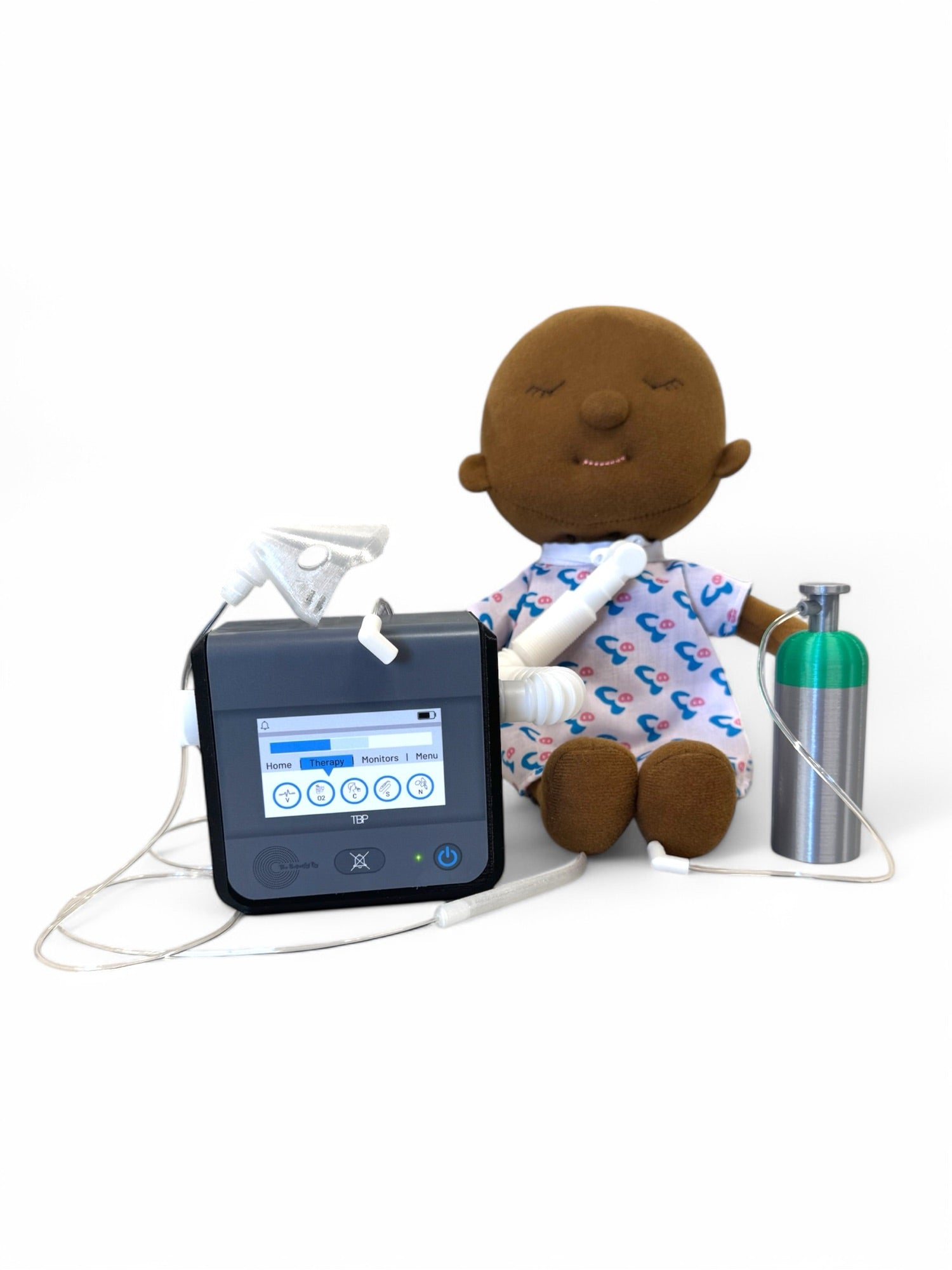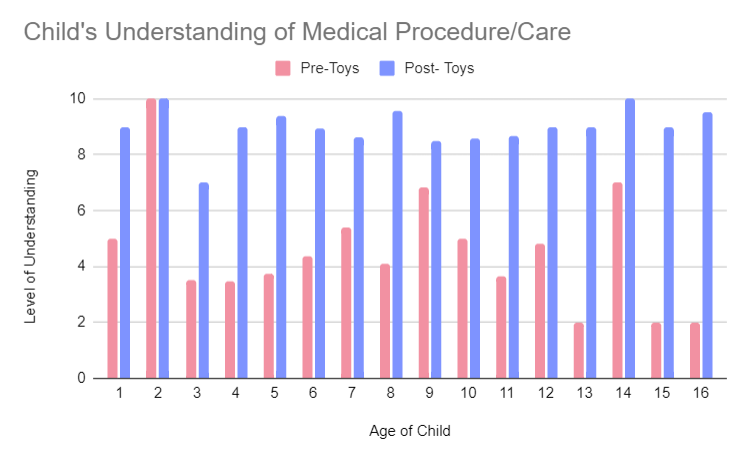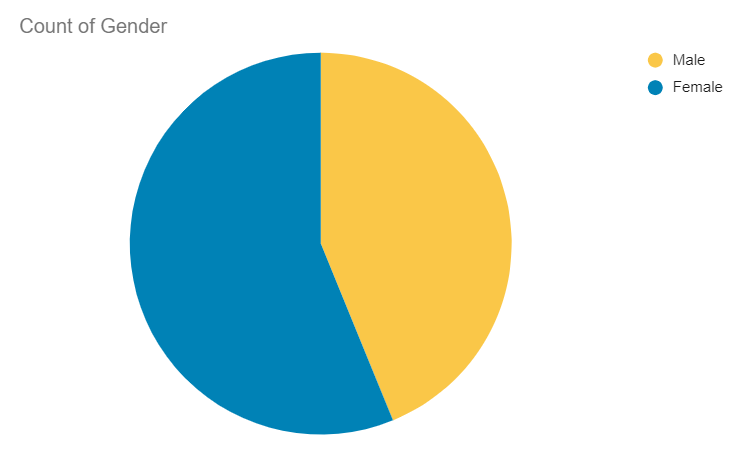


Revolutionizing Pediatric Healthcare Through Educational and Realistic Medical Toys
We equip healthcare providers and caregivers with tools that allow children to learn about and process their medical experiences through play. We have heard so much feedback about these toys reducing fear and increasing cooperation, so we organized a study in 2024 to obtain measurable data.
We provided anonymous pre and post questionnaires to parents and healthcare professionals across 22 different hospitals to assess measurable benefits of The Butterfly Pig medical toys in the hospital setting.
25,000+ kids supported through pediatric medical play









Reduced by an average of 40% after only 1 interaction with the toys.
In rare instances where anxiety increased after interaction, those patients also had a large increase in understanding – so the lack of initial anxiety could likely be related to not understanding upcoming procedures.
Previous research shows that anxiety can increase the perception of pain (McGrath, 1994), so reduction in anxiety could also reduce the amount of pain children experience, and therefore reduce pain medication administration.
Pediatric anxiety is COMMON,
and increased anxiety leads to more perceived pain,
increased use of sedation and pain medications,
and longer procedure times.


QDid you notice any positive changes in your child’s recovery process due to the toy medical device(s)?
1 (Not at all) – 10 (Absolutely)Average: 8.25

Increased Patient Understanding
Parents rated their child’s understanding of their medical diagnosis or procedure on a scale of 1-10 with 1 being “no understanding” and 10 being “Very Knowledgable”
Understanding increased by an average of 112% after only 1 interaction with the toys.
That data was not surprising considering that we also measured preferred learning method, with 80+% reporting doing and seeing as their best method, with their worst learning methods being listening and reading.
This is important because the vast majority of current patient education is presented verbally or through handouts!
How would you rate current resources available to you for pediatric patient education in medical care; specifically for children that learn best by DOING (hands-on interaction). 1 (Very lacking) – 10 (Abundant)
Average: 5.14
How would you rate resources available to you for pediatric patient education in medical care now INCLUDING the use of these custom medical toys. 1 (Very lacking) – 10 (Abundant)
Average: 8.23
Professionals rated average cooperation of their patients in the pre-intervention survey, which we compared to the cooperation of the participating patients after they interacted with the medical toys.
How frequently do you find yourself spending extra time on pediatric patient care due to their fear or anxiety around medical procedures? 1 (Not at all) – 10 (Constantly)
Average: 8.25
How did these toys impact your time efficiency in providing child-centered education and care? 1 (Not at all helpful) – 10 (Extremely helpful)
Average: 8.23
Q“Being able to have the supplies readily available made my intervention that much more impactful as I was able to use medical play when requested vs. spending time creating materials + missing my window.”
- Anon Child Life Specialist
Average: 8.25
Medical procedures and devices are unfamiliar to most people, unless they have personal experience.
Because of this, it is incredibly difficult for parents to be involved in educating and preparing their children for medical procedures.
This data shows that by having access to medical toys, parents are feeling empowered enough to be actively involved in the process.

Sample size of 97 pediatric patients across 22 different hospitals.


Christina M. Rodriguez, Vanessa Clough, Anjali S. Gowda, Meagan C. Tucker, Multimethod Assessment of Children’s Distress During Noninvasive Outpatient Medical Procedures: Child and Parent Attitudes and Factors, Journal of Pediatric Psychology, Volume 37, Issue 5, June 2012, Pages 557–566, https://doi.org/10.1093/jpepsy/jss005
Patricia A. McGrath, Psychological aspects of pain perception, Archives of Oral Biology, Volume 39, Supplement, 1994, Pages S55-S62, ISSN 0003-9969, https://doi.org/10.1016/0003-9969(94)90189-9